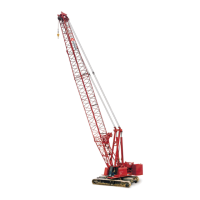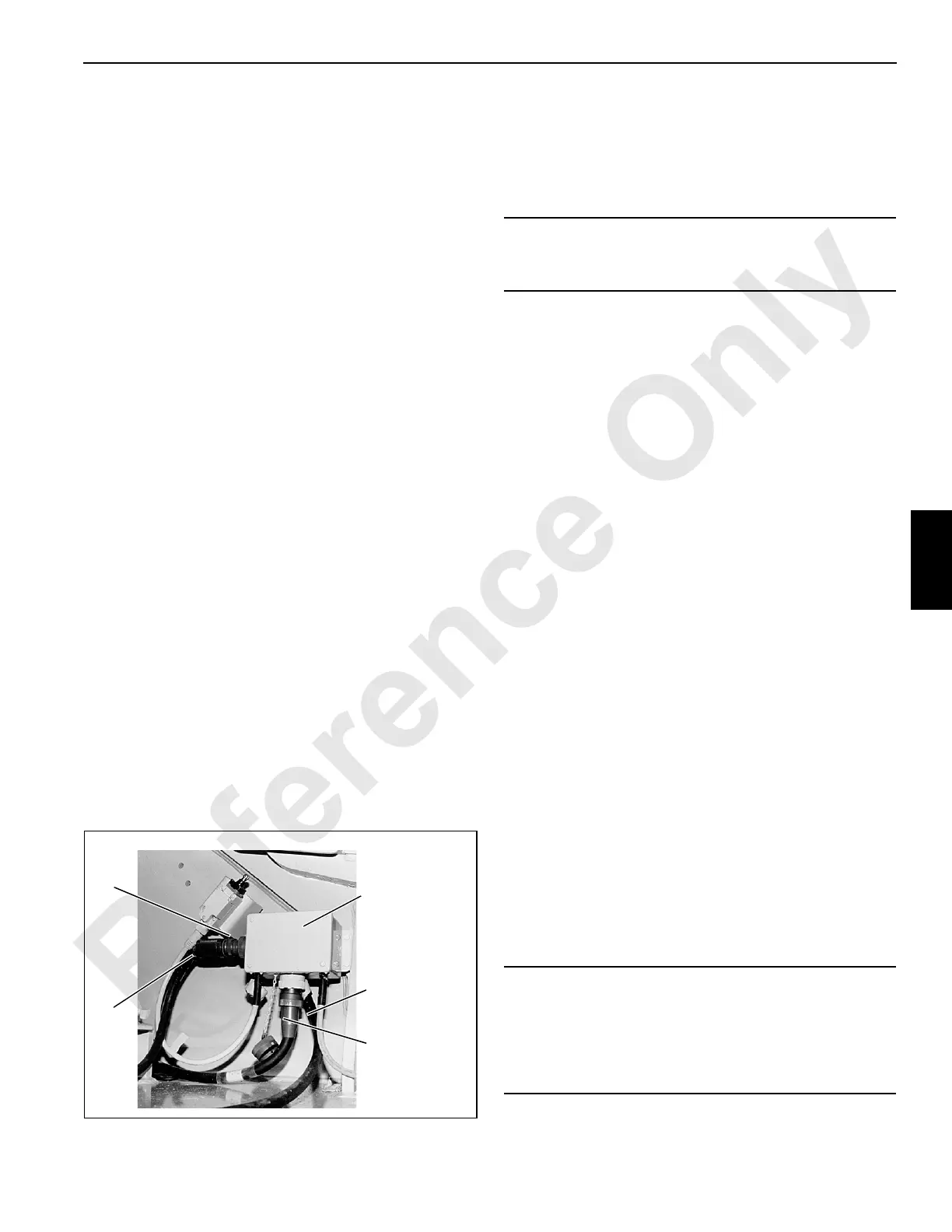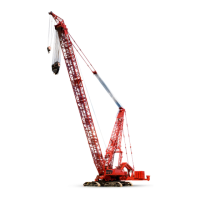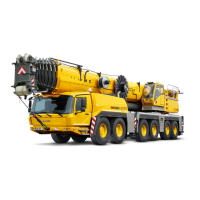Manitowoc Published 10-01-2012, Control # 045-08 5-9
777 SERVICE MANUAL HOISTS
5
Disconnecting Block-Up Limit Control
See Figures 5-6 and 5-7 for identification of the electric cords
and shorting plugs.
Shorting plug SP1 is provided on the left front corner of
rotating bed so the block-up limit controls can be
disconnected for the following reasons:
• Crane setup and rigging.
• Maintenance.
• Operations not requiring use of a block-up limit control
(clamshell and drag-line).
To disconnect the block-up limit controls, proceed as follows:
1. Disconnect electric cord (C2) from cable reel (CR1).
2. Remove the closure cap from shorting plug (SP1).
3. Connect electric cord (C2) to shorting plug (SP1).
4. Reverse the steps to reconnect the block-up limit
control.
Removing Jib or Boom Point
See Figures 5-6 and 5-7 for identification of the electric cords
and shorting plugs.
The junction boxes on the boom and luffing jib points have
shorting plugs.
If the fixed jib point, upper boom point, or luffing jib point has
a block-up limit switch, the electric cord from the limit switch
must be connected to the proper shorting plug when the
corresponding attachment is removed.
Failing to perform this step will prevent the load drum from
hoisting and the boom from lowering. Also the operating limit
alert will come on.
Be sure to reconnect electric cord to proper block-up
limit switch when corresponding attachment is
reinstalled.
Maintenance
See Figure 5-8 for following procedure
Inspect and test the block-up limit controls weekly or every
40 hours of operation, as follows:
1. Lower the boom onto blocking at ground level and
carefully inspect the following items:
a. Inspect each limit switch lever and actuating lever
for freedom of movement. Apply one-half shot of
grease to the fitting on the actuating lever. Wipe
away any excess grease.
b. Inspect each weight for freedom of movement on
the load line.
c. Inspect each weight, each chain, each shackle and
each connecting pin for excessive or abnormal
wear. Make sure cotter pins for shackles are
installed and spread.
d. Inspect the entire length of electric cords for
damage.
e. Check that the electric cords are clear of all moving
parts on the boom and jib and that the cords are
securely fastened to the boom and jib with metal
straps.
f. Check that all plugs are securely fastened.
2. Test the block-up limit controls for proper operation
using either of the following methods:
a. BOOM LOWERED: Manually lift each weight —
one at a time — while the engine is running. The
load drum should not operate in the hoist direction
and the boom/luffing hoist should not operate in the
lower direction.
b. BOOM RAISED: Slowly hoist each load block and
weight ball — one at a time — against the weight.
When the chain goes slack, the corresponding load
drum should stop hoisting and the boom/luffing hoist
should not operate in the lower direction.
FIGURE 5-7
P440
JB1
Boom Junction Box
C2
Electrical Cord
To Boom Angle
Indicator
on Rotating Bed
SP1
C1
CAUTION
Do not operate crane until cause for improper operation
and all hazardous conditions are found and corrected.
CAUTION
Use extreme care when testing block-up limit controls
when boom is raised. If block-up limit control fails to stop
load, immediately stop load by moving drum control
handle to off or by applying drum working brake;
otherwise, two-blocking may occur.

